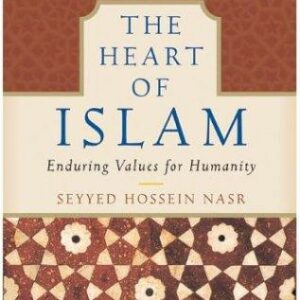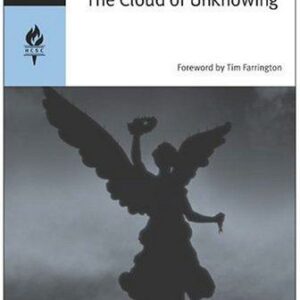Jesus of Nazareth
$20.00
| Title | Range | Discount |
|---|---|---|
| Trade Discount | 5 + | 25% |
- Description
- Additional information
Description
The New York Times bestselling final volume in the Pope’s Jesus of Nazareth series, detailing how the stories of Jesus’ infancy and childhood are as relevant today as they were two thousand years ago.
In 2007, Joseph Ratzinger published his first book as Pope Benedict XVI in order “to make known the figure and message of Jesus.” Now, the Pope focuses exclusively on the Gospel accounts of Jesus’ life as a child. The root of these stories is the experience of hope found in the birth of Jesus and the affirmations of surrender and service embodied in his parents, Joseph and Mary.
This is a story of longing and seeking, as demonstrated by the Magi searching for the redemption offered by the birth of a new king. It is a story of sacrifice and trusting completely in the wisdom of God as seen in the faith of Simeon, the just and devout man of Jerusalem, when he is in the presence of the Christ child. Ultimately, Jesus’ life and message is a story for today, one that speaks to the restlessness of the human heart searching for the sole truth which alone leads to profound joy.On April 19, 2005, Cardinal Joseph Ratzinger was elected Pope Benedict XVI and became the 264th successor to Peter as the “Vicar of Jesus Christ.” He may well have been the most accomplished theologian to be elected Pope in modern times. Beginning in 1981, he spent more than twenty years as the Prefect of the Congregation for the Doctrine of the Faith, a role often depicted as the “defender of the faith.” Cardinal Ratzinger was also President of the Pontifical Biblical Commission and of the Preparatory Commission that codified the new Catechism of the Catholic Church, published in 1994. Pope Benedict XVI died in 2022.Chapter 1
“Where Are You From?” (John 19:9)
The question about Jesus’ origin as a question about being and mission
While he was interrogating Jesus, Pilate unexpectedly put this question to the accused: “Where are you from?” Jesus’ accusers had called for him to receive the death penalty by dramatically declaring that this Jesus had made himself the Son of God-a capital offense under the law. The “enlightened” Roman judge, who had already expressed skepticism regarding the question of truth (cf. Jn 18:38), could easily have found this claim by the accused laughable. And yet he was frightened. The accused had indicated that he was a king, but that his kingdom was “not of this world” ( Jn 18:36). And then he had alluded to a mysterious origin and purpose, saying: “For this I was born and for this I have come into the world, to bear witness to the truth” ( Jn 18:37).
All this must have seemed like madness to the Roman judge. And yet he could not shake off the mysterious impression left by this man, so different from those he had met before who resisted Roman domination and fought for the restoration of the kingdom of Israel. The Roman judge asks where Jesus is from in order to understand who he really is and what he wants.
The question about Jesus’ provenance, as an inquiry after his deeper origin and hence his true being, is also found in other key passages of Saint John’s Gospel, and it plays an equally important role in the Synoptic Gospels. For John, as for the Synoptics, it raises a singular paradox. On the one hand, counting against Jesus and his claim to a divine mission, is the fact that people knew exactly where he was from: he does not come from heaven, from “the Father,” from “above,” as he purports to ( Jn 8:23). No: “Is not this Jesus, whose father and mother we know? How does he now say, ‘I have come down from heaven’?” ( Jn 6:42).
The Synoptics tell of a similar dispute that arose in the synagogue at Nazareth, Jesus’ hometown. Jesus had expounded the words of sacred Scripture not in the customary manner, but by relating them to himself and his mission with an authority that went beyond the bounds of all exegesis (cf. Lk 4:21). The listeners were understandably shocked by this treatment of Scripture, by the claim that he himself was the inner point of reference and the key to exegesis of the sacred text. Shock led to denial: ” ‘Is not this the carpenter, the son of Mary and brother of James and Joses and Judas and Simon, and are not his sisters here with us?’ And they took offense at him” (Mk 6:3).
They know perfectly well who Jesus is and where he comes from-he is one among others. He is one like us. His claim can only be presumption. Moreover, Nazareth was not associated with any such promise. John recounts that Philip said to Nathanael: “We have found him of whom Moses in the law and also the prophets wrote: Jesus of Nazareth, the son of Joseph.” Nathanael’s response is well known: “Can anything good come out of Nazareth?” ( Jn 1:45f.). The ordinariness of Jesus, the provincial carpenter, seems not to conceal a mystery of any kind. His origin marks him out as one like any other.
Yet the reverse argument is also adduced against Jesus’ authority, as in the dispute with the man born blind, after he received his sight: “We know that God has spoken to Moses, but as for this man [Jesus], we do not know where he comes from” ( Jn 9:29).
When Jesus preached in their synagogue, the people of Nazareth had said something rather similar, before dismissing him as someone well-known to them and just like them: “Where did this man get all this? What is the wisdom given to him? What mighty works are wrought by his hands!”
(Mk 6:2). Here too the question “where is he from?” arises- only to be dismissed straight away by the reference to his relatives.
Jesus’ provenance is both known and unknown, seemingly easy to establish, and yet not exhaustively. In Caesarea Philippi, Jesus will ask his disciples: “Who do people say that I am? . . . Who do you say that I am?” (Mk 8:27ff.). Who is Jesus? Where is he from? The two questions are inseparably linked.
The four Gospels set out to answer these questions. They were written in order to supply an answer. Matthew opens his Gospel with Jesus’ genealogy because he wants to put the question of Jesus’ provenance in the correct light from the very beginning: the genealogy serves as a kind of heading to the entire Gospel. Luke, on the other hand, places Jesus’ genealogy at the beginning of his public ministry, as a kind of public presentation of Jesus, in order to answer the same question with a different emphasis-in anticipation of all that is about to unfold in the rest of the Gospel. Let us now try to understand more closely the essential purpose of the two genealogies.
For Matthew, two names are of key significance if we are to understand Jesus’ provenance: Abraham and David.
The story of the promise begins with Abraham, following the dispersal of mankind after the building of the Tower of Babel. Abraham points ahead to what is yet to come. He is a wayfarer, not only from the land of his birth into the promised land, but also on the journey from the present into the future. His whole life points forward, it is a dynamic of walking along the path of what is to come. Thus the Letter to the Hebrews rightly presents him as a pilgrim of faith on the basis of the promise: “He looked forward to the city which has foundations, whose builder and maker is God” (11:10). For Abraham, the promise refers in the first instance to his descendants, but it also extends further: “all the nations of the earth shall bless themselves by him” (Gen 18:18). Thus the whole history, beginning with Abraham and leading to Jesus, is open toward universality- through Abraham, blessing comes to all.
From the beginning of the genealogy, then, the focus is already on the end of the Gospel, when the risen Lord says to the disciples: “Make disciples of all nations” (Mt 28:19). In the particular history revealed by the genealogy, this movement toward the whole is present from the beginning: the universality of Jesus’ mission is already contained within his origin.
Both the genealogy and the history that it recounts are largely structured around the figure of David, the king to whom the promise of an eternal kingdom had been given: “Your throne shall be established for ever” (2 Sam 7:16). The genealogy that Matthew puts before us is steeped in this promise. It is constructed in three sets of fourteen generations, at first rising from Abraham to David, then descending from Solomon to the Babylonian captivity, and then rising again to Jesus, in whom the promise comes to fulfillment. The king who is to last for ever now appears-looking quite different, though, from what the Davidic model might have led one to expect.
This threefold division becomes even clearer if we bear in mind that the Hebrew letters of the name “David” add up to fourteen: even in terms of number symbolism, then, the path from Abraham to Jesus bears the clear imprint of David, his name and his promise. On this basis one could say that the genealogy, with its three sets of fourteen generations, is truly a Gospel of Christ the King: the whole of history looks toward him whose throne is to endure for ever.
Matthew’s genealogy traces the male line, but in the course of it, prior to Mary who appears at the end, four women are mentioned by name: Tamar, Rahab, Ruth and the wife of Uriah. Why do these women appear in the genealogy? By what criterion are they chosen?
It has been said that all four women were sinners. So their inclusion here would serve to indicate that Jesus took upon himself their sins-and with them the sins of the world-and that his mission was the justification of sinners.
But this cannot have been the determining factor for the selection, not least because it does not in fact apply to all four women. More important, none of these women were Jewish. So through them the world of the Gentiles enters the genealogy of Jesus-his mission to Jews and Gentiles is made manifest.
Yet most important of all is the fact that the genealogy ends with a woman: Mary, who truly marks a new beginning and relativizes the entire genealogy. Throughout the generations, we find the formula: “Abraham was the father of Isaac . . .” But at the end, there is something quite different. In Jesus’ case there is no reference to fatherhood, instead we read: “Jacob [was] the father of Joseph the husband of Mary, of whom Jesus was born, who is called Christ” (Mt 1:16). In the account of Jesus’ birth that follows immediately afterward, Matthew tells us that Joseph was not Jesus’ father and that he wanted to dismiss Mary on account of her supposed adultery. But this is what is said to him: “That which is conceived in Mary is of the Holy Spirit” (Mt 1:20). So the final sentence turns the whole genealogy around. Mary is a new beginning. Her child does not originate from any man, but is a new creation, conceived through the Holy Spirit.
The genealogy is still important: Joseph is the legal father of Jesus. Through him, Jesus belongs by law, “legally,” to the house of David. And yet he comes from elsewhere, “from above”-from God himself. The mystery of his provenance, his dual origin, confronts us quite concretely: his origin can be named and yet it is a mystery. Only God is truly his “father.” The human genealogy has a certain significance in terms of world history. And yet in the end it is Mary, the lowly virgin from Nazareth, in whom a new beginning takes place, in whom human existence starts afresh.
Let us take a look now at the genealogy found in Luke’s Gospel (cf. 3:23-38). Several differences strike us vis-à-vis the list of ancestors supplied by Saint Matthew.
We have already established that this genealogy introduces the public ministry, it so to speak legitimizes Jesus in his public mission, whereas Matthew presents the genealogy as the very start of the Gospel, proceeding from there to the account of Jesus’ conception and birth, and thus unfolding the question of his provenance in its dual significance.
A further striking difference is that Matthew and Luke agree on only a handful of names; not even the name of Joseph’s father is common to the two. How can this be? Apart from elements drawn from the Old Testament, both authors have based themselves on traditions whose sources we cannot reconstruct. It seems to me utterly futile to formulate hypotheses on this matter. Neither evangelist is concerned so much with the individual names as with the symbolic structure within which Jesus’ place in history is set before us: the intricacy with which he is woven into the historical strands of the promise, as well as the new beginning which paradoxically characterizes his origin side by side with the continuity of God’s action in history.
A further difference consists in the fact that whereas Matthew climbs from the beginnings-from the root-to the present, to the top of the “tree,” Luke on the contrary descends from Jesus, the “treetop,” down to the roots, in order to show that in the end the ultimate root is found not in the depths but rather in the “heights”-God is there at the beginning of human existence: “Enos, the son of Seth, the son of Adam, the son of God” (Lk 3:38).
An element common to Matthew and Luke is that the genealogy breaks off and comes to a stop when it reaches Joseph: “Jesus, when he began his ministry, was about thirty years of age, being the son (as was supposed) of Joseph” (Lk 3:23). Legally he was considered Joseph’s son, as Luke tells us. Yet Jesus’ true origin had already been made clear in the first two chapters of Luke’s Gospel.
Whereas Matthew gives a clear and theologically symbolic structure to his genealogy, with its three sets of fourteen names, Luke arranges his 76 names without any outwardly recognizable pattern. Yet here too a symbolic structuring of historical time can be detected: the genealogy contains eleven times seven members. Luke may have known the apocalyptic formula that divides world history into twelve parts and at the end consists of eleven times seven generations. So this could be a discreet way of indicating that with Jesus “the fullness of time” had come, that with him the decisive hour of world history had dawned: he is the new Adam, who once again comes “from God”-but in a more radical way than the first Adam, not merely breathed into being by God, but truly God’s “Son.” While for Matthew it is the Davidic promise that permeates the symbolic structuring of time, Luke, in tracing the line back to Adam, wants to show that humanity starts afresh in Jesus. The genealogy expresses a promise that concerns the whole of humanity.
In this connection, another reading of Luke’s genealogy is worth mentioning, one that we find in the writings of Saint Irenaeus. The text he was using had not 76 but 72 names. 72 (or 70) was the number, derived from Ex 1:5, that indicated the number of people in the world-a figure that appears in the Lucan tradition of 72 (or 70) disciples, whom Jesus set alongside the twelve Apostles. Irenaeus writes as follows: “To prove this, Luke shows that the genealogy of our Lord, which extends to Adam, contains seventy-two generations, and so he joins the end to the beginning and points out that it is he [Christ] who recapitulates in himself all the nations that had been dispersed from Adam onward, and all the tongues, and the human race, including Adam himself. Hence Paul, too, styled Adam a type of the one who was to come” (Adv. Haer. III, 22,3).
Even if the authentic Lucan text does not contain at this point the symbolism of the 70, on which Saint Irenaeus’ exegesis depends, nevertheless the underlying intention of Luke’s genealogy is correctly grasped here. Jesus takes upon himself the whole of humanity, the whole history of man, and he gives it a decisive re-orientation toward a new manner of human existence.
John the evangelist, who repeatedly raises the question of Jesus’ provenance, does not present a genealogy at the beginning of his Gospel, but in the Prologue he grandly and emphatically proposes an answer to that question. At the same time he expands his answer to the question into a definition of Christian life: on the basis of Jesus’ provenance he sheds light upon the identity of his followers.
“In the beginning was the Word, and the Word was with God, and the Word was God . . . and the Word became flesh and dwelt [pitched his tent] among us” ( Jn 1:1-14). The man Jesus is the dwelling-place of the Word, the eternal divine Word, in this world. Jesus’ “flesh,” his human existence, is the “dwelling” or “tent” of the Word: the reference to the sacred tent of Israel in the wilderness is unmistakable. Jesus is, so to speak, the tent of meeting-he is the reality for which the tent and the later Temple could only serve as signs. Jesus’ origin, his provenance, is the true “beginning”-the primordial source from which all things come, the “light” that makes the world into the cosmos. He comes from God. He is God. This “beginning” that has come to us opens up-as a beginning-a new manner of human existence. “For to all who received him, who believed in his name, he gave power to become children of God; who were born, not of blood nor of the will of the flesh nor of the will of man, but of God” ( Jn 1:12f.).
One version of the manuscript tradition preserves a reading of this sentence not in the plural but in the singular: “who was born, not of blood . . .” This makes the sentence into a clear reference to the virginal conception and birth of Jesus. Jesus’ being from God, as affirmed by the tradition preserved by Matthew and Luke, would be concretely underlined once more. But this is only a secondary reading: the authentic text of the Gospel speaks quite clearly here of those who believe in Christ’s name and who receive a new origin through that name. Yet the connection with the confession of Jesus’ birth from the Virgin Mary is undeniably present: those who believe in Jesus enter through faith into Jesus’ unique new origin, and they receive this origin as their own. In and of themselves, all these believers are initially “born of blood and of the will of man.” But their faith gives them a new birth: they enter into the origin of Jesus Christ, which now becomes their own origin. From Christ, through faith in him, they are now born of God.
So John has recapitulated the deepest meaning of the genealogies, and moreover he has taught us to understand them as an interpretation of our own origin, our true “genealogy.” Just as the genealogies break off at the end, because Jesus was not begotten by Joseph, but was truly born of the Holy Spirit from the Virgin Mary, so it can now be said of us that our true “genealogy” is faith in Jesus, who gives us a new origin, who brings us to birth “from God.”US
Additional information
| Weight | 7.4 oz |
|---|---|
| Dimensions | 0.5500 × 5.0100 × 7.5100 in |
| Series | |
| Imprint | |
| Format | |
| ISBN-13 | |
| ISBN-10 | |
| Author | |
| Audience | |
| BISAC | |
| Subjects | pope benedict books, REL010000, Pope Francis, advent devotional, catholic gifts for women, life of christ, jesus childhood, jesus of nazareth, pope benedict xvi books, pope benedict xvi, catholic gifts, benedict xvi, joseph and mary, christian education, Infancy Narratives, childhood of jesus, papacy, birth of jesus, catholic christmas gifts, Christmas, theology, Christology, new testament, christianity, old testament, religion, historical, meditation, jesus christ, Catholicism, Catholic, Pope Benedict, jesus, pope, genealogy, REL006070, bethlehem |











